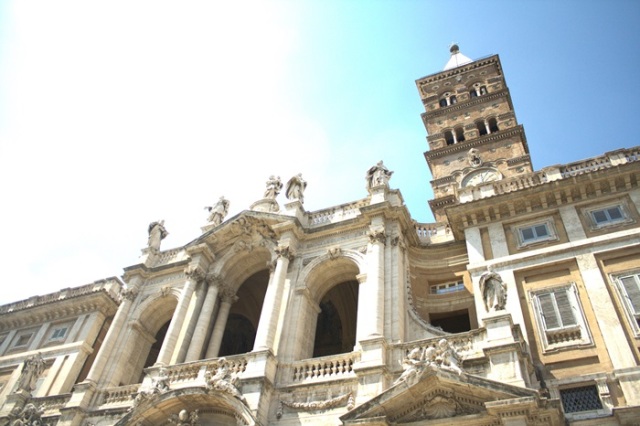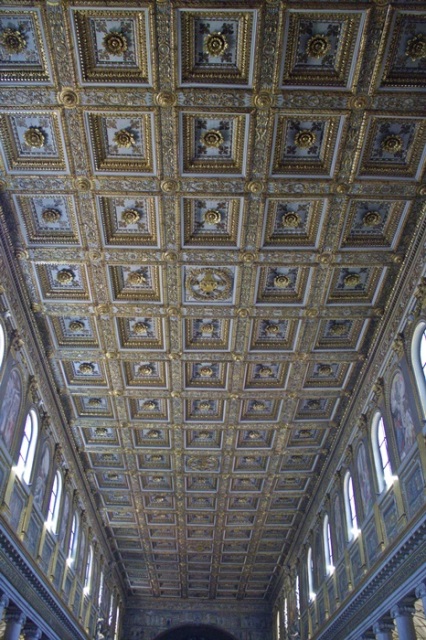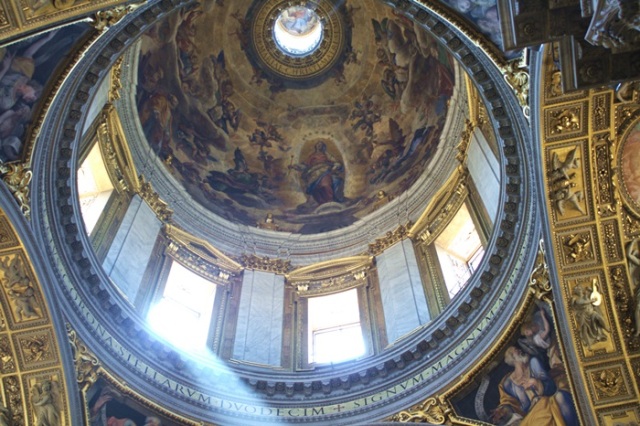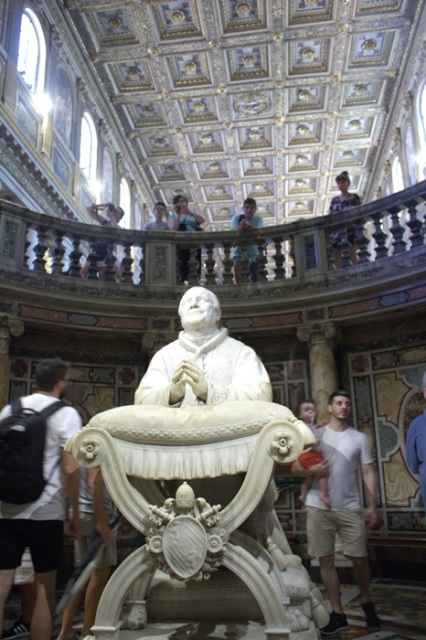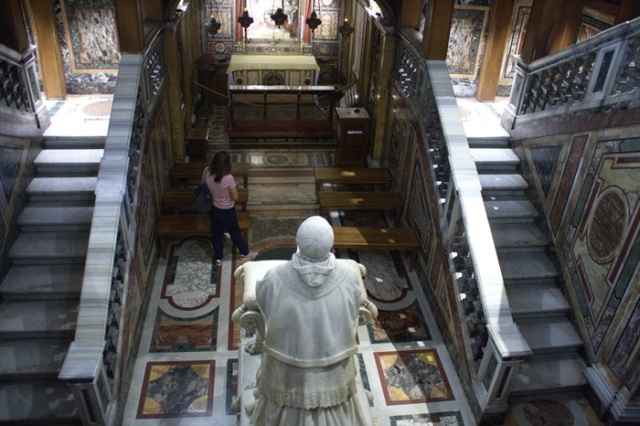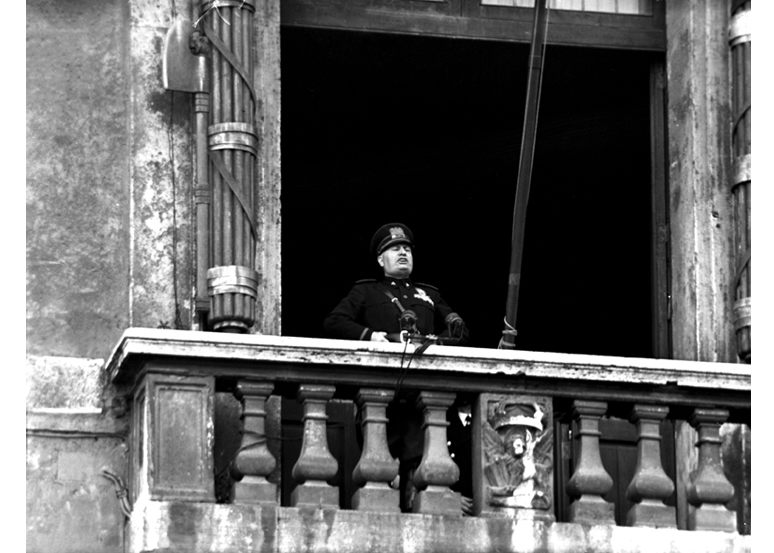We then took the hop-on hop-off bus to get one last look at Rome. All around Rome, on the busy pedestrian streets, were these armoured vehicles blocking the road. We worked out that they were anti-terrorist measures, to stop anyone ploughing through pedestrians in a car or bus.

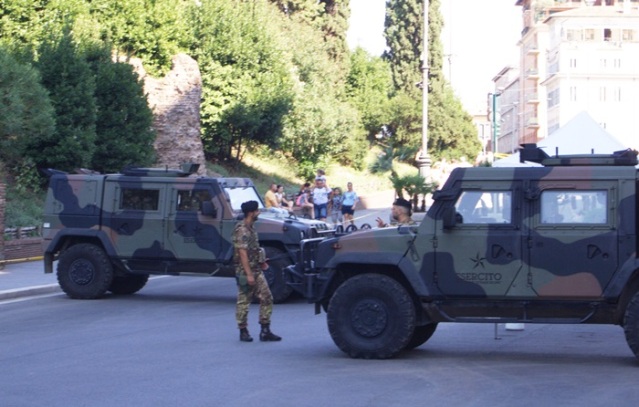
The Circus Maximus is an ancient Roman chariot-racing stadium and mass entertainment venue. Situated in the valley between the Aventine and Palatine Hills, it was the first and largest stadium in ancient Rome and its later Empire. It measured 621m in length and 118m in width and could accommodate over 150,000 spectators. In its fully developed form, it became the model for circuses throughout the Roman Empire. The site is now a public park.
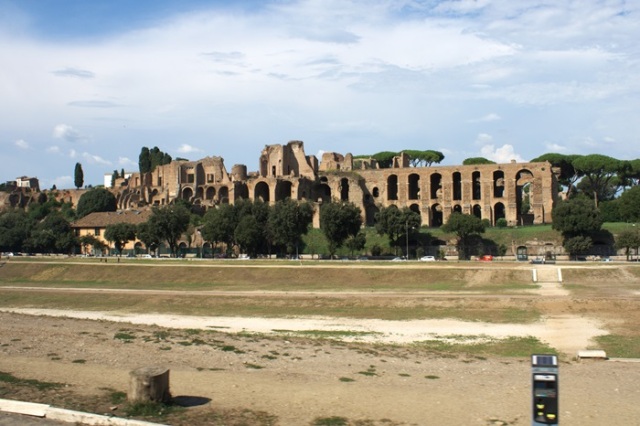

Another church!

The Basilica di Santa Maria sopra Minerva (near the Pantheon) is one of the major churches of the Roman Catholic Order of Preachers (better known as the Dominicans). While many other medieval churches in Rome have been given Baroque makeovers that cover Gothic structures, the Minerva is the only extant example of original Gothic architecture church building in Rome.

These gold candlesticks (without the candles) were taller than me!! Can you imagine what they must be worth!!

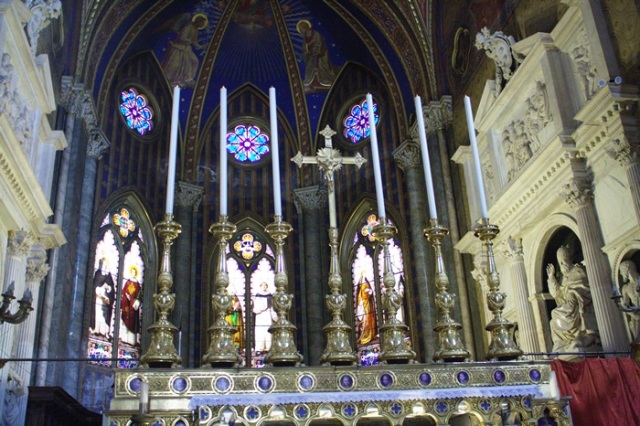
One last visit to the Pantheon. These horse drawn carriages are all over Rome (and Florence). The horses all have poop bags attached to the rears which catch all their droppings so you don't see unsightly horse poop all over the place...very clever!


We made our way towards Piazza Navona which we had not visited yet, and on the way found the church of San Luigi dei Francesi which had some Caravaggio's!

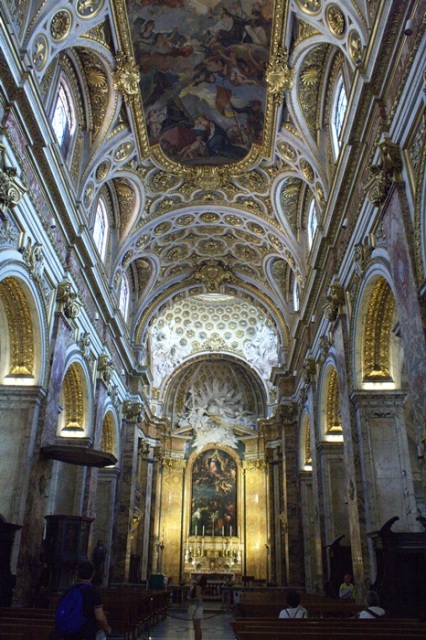
The Contarelli Chapel contains a cycle of paintings by the Baroque master Caravaggio in 1599–1600 about the life of St. Matthew. This includes the three world-renowned canvases of The Calling of St Matthew, The Inspiration of Saint Matthew, and The Martyrdom of Saint Matthew. While admiring these paintings the lights went off. We then realised that you have to put €1 into a little box which switches the lights on for a couple of minutes...the Brat thought this was a rip-off but I thought it was a quite a clever way for the church to make some extra money and also ensuring that the paintings are not under bright light all the time.

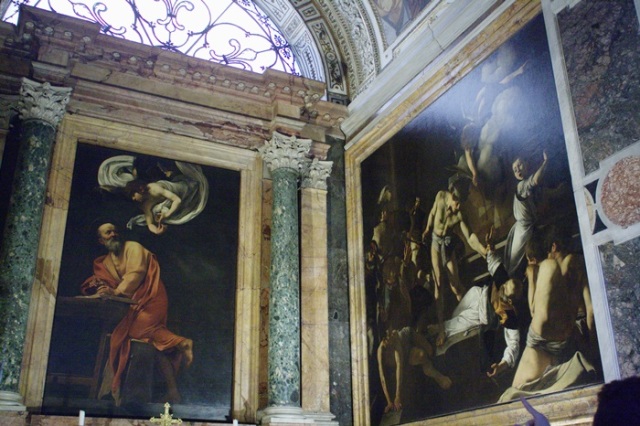
Piazza Navona is a square built on the site of the Stadium of Domitian, built in the 1st century AD, and follows the form of the open space of the stadium.

In the center of the square stands the famous Fontana dei Quattro Fiumi or Fountain of the Four Rivers (1651) by Gian Lorenzo Bernini, topped by the Obelisk of Domitian.

Piazza Navona has two other fountains. At the southern end is the Fontana del Moro with a basin and four Tritons sculpted by Giacomo della Porta (1575) to which, in 1673, Bernini added a statue of a Moor, wrestling with a dolphin. At the northern end is the Fountain of Neptune (1574) also created by Giacomo della Porta; the statue of Neptune, by Antonio Della Bitta, was added in 1878 to create a balance with La Fontana del Moro.
Fountain of Neptune
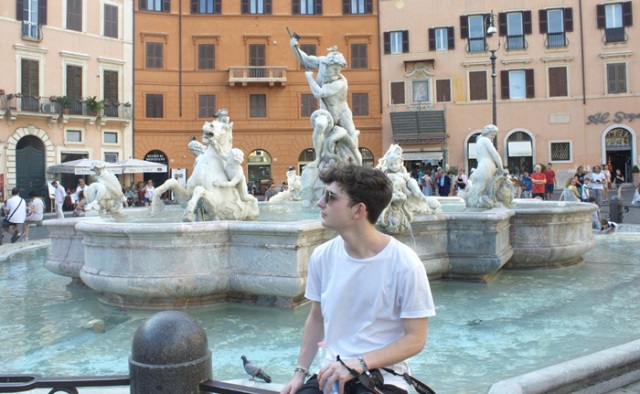
La Chiesa Sant'Agnese in Agone is a 17th-century Baroque church which faces onto the Piazza Navona. Construction began in 1652 under the architects Girolamo Rainaldi and his son Carlo Rainaldi. After numerous quarrels, the other main architect involved was Francesco Borromini.
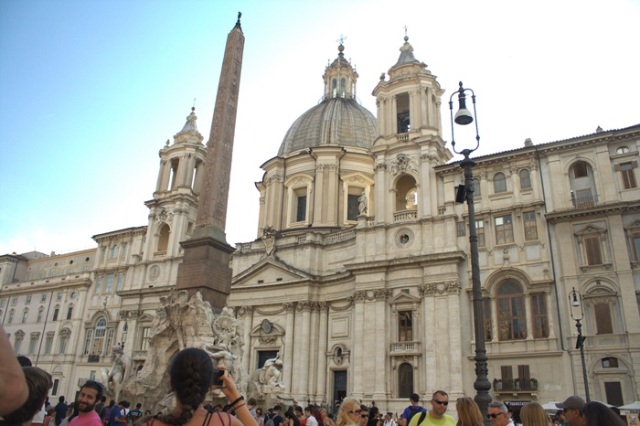
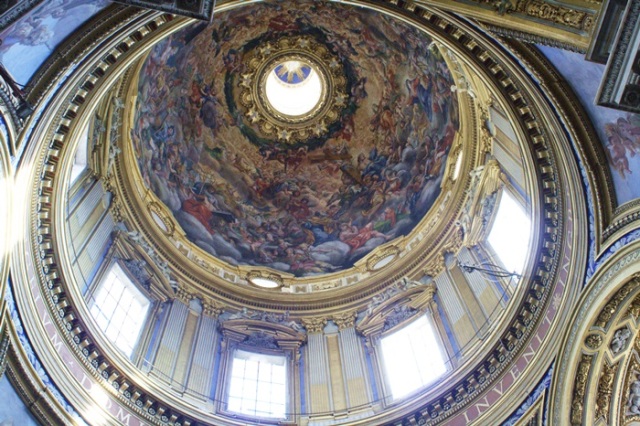

The square is full of artists drawing/painting and selling their artworks, and buskers entertaining the crowd. After spending a pleasant hour or two taking in the sights and sounds, we then went to the Spanish Steps for the last time and had dinner nearby, and that was it for our Roman holiday!!


Next up...Sicily.




Stunning report Fluts






